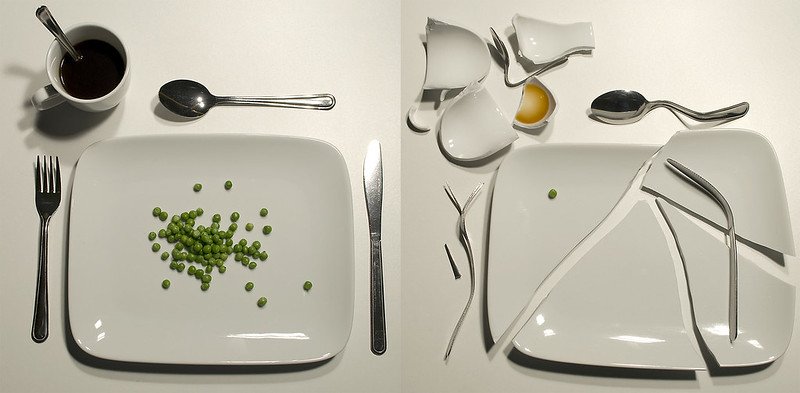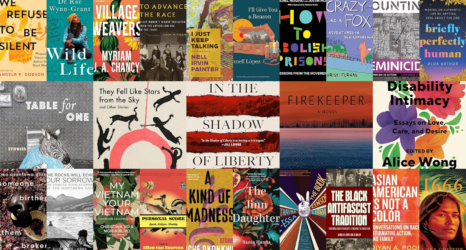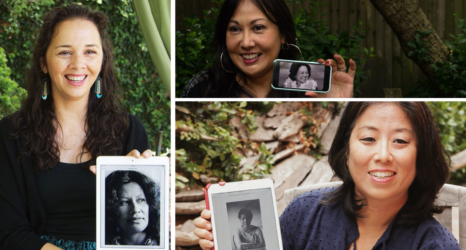In a world that wants to shrink Asian American women, taking up space is a radical act.

In all the years I spent in eating disorder treatment from my late teens to my mid-twenties, I met only one other Asian patient. I’ll call her “L.” Like me, L. was half-Asian and half-white. We were both born and raised in predominately Asian American communities in California, in neighborhoods that had glittering sidewalks and good public schools. Given our similar backgrounds, it felt strange that we found ourselves there in the same place at the same time, the only two women of color locked in a psychiatric unit at University of Iowa Hospitals and Clinics, both so far from home.
Unlike me, L. was a model patient. She was a doctor herself, on leave from her medical residency. Her father, an immigrant from Vietnam, worked as a doctor, too. She was much thinner than me and very pretty, with brown hair sun-kissed from long-distance running.
In the months we spent together in the hospital, I came to idolize L., not just because of what we shared, but because I felt she had succeeded in ways I had failed. I was an unmotivated college student and still painfully shy, with bad skin and scars on my knuckles from purging. In the hospital under court order, I was labeled “resistant.” I once got in trouble for smearing butter under the tables in order to avoid putting it on my bread.
“That could get on somebody else’s clothes,” a doctor told me after I got caught, and I felt ashamed for being so selfish. I was so far from the perfect Asian daughter that L. seemed to be.
Back then, at the start of the new millennium, Asian Americans were not supposed to have eating disorders. The psychiatric establishment still maintained that anorexia and bulimia primarily affected middle- and upper-class white girls and young women. That L. was the only other Asian patient I met across over a decade of treatment, speaks to our relative privilege, as well as perhaps to our proximity to whiteness.
These days, there is growing awareness of how incorrect and damaging that perception was: eating disorders are diverse in presentation and affect people of all races, genders, classes and ages. Yet, even today, the dominant image of the person with an eating disorder remains young, white, female and wealthy. Despite increased visibility, there are few frameworks for thinking intersectionally about what eating disorders mean for those of us who do not fit the traditional image.
In high school, I used to go to the public library after school and run my fingers along the spines of the small section of books they carried on adolescent trauma and mental health, books with titles like Reviving Ophelia and The Best Little Girl in the World. The girls on the covers were wispy blondes with watery blue eyes. The pages inside described them as pale and easily bruised, with adults in their lives who loved them and would do anything to save them. I learned from these books that female pain could best be understood through the language of whiteness.
Eating disorders are not fundamentally about weight and appearance—if they can be said to be about these things at all. But they do concern problems of identification and embodiment, power and powerlessness. For this reason, they cannot be addressed without accounting for the intersections of gender and race.
However, if mentioned at all in mainstream feminist theories of eating disorders, racism is too often simply appended to more widely recognized forms of gendered injury: impossible standards of beauty, domestic and sexual violence, the demand that women take up less space. What these theories do not account for is that, for women of color, race cannot be separated from how we experience our bodies and their objectification.
Many women of color report that they have been accused of “wanting to be white” for developing disordered eating behaviors. While this experience does not apply to everyone and alone is totally insufficient for understanding eating disorders among women of color, for me personally, there was some measure of truth to the idea that pursuing thinness meant pursuing an approximation of whiteness—whiteness not as beauty, but as the most legible form of vulnerability.
As a teenager struggling privately with trauma and anxiety, I romanticized the fragility associated with white girls as an imagined escape from the model minority optic, from the rigid expectations of conformity and high achievement placed on many Asian American children in the Silicon Valley. In a shiny, future-oriented world that seemed incapable of accommodating grief, turning that culture’s demands for perfection against myself through self-starvation and self-induced vomiting felt like the only available means of refusal.
For this reason, among others, I am uncomfortable with theories that reductively ascribe eating disorders among Asian American women solely to the perceived patriarchal nature of our “traditional” Asian cultures.
My medical records contain the following sentence: “Patient grew up in a family that is emotionally restrictive probably influenced by mother’s Japanese heritage.” I do not believe I ever indicated anything to this effect. It is something that the doctors simply concluded. Looking back, I realize how wrong they were: my eating disorder was not cultural, or at least not in the way that the doctors believed—it was political.
When you are anorexic, you burn down your body instead of your world, and you often do it so privately and quietly that no one may be paying attention. I no longer play with fire, but I still understand that longing.
In group therapy one time, a doctor turned to L. and asked, “But why starve yourself? Why did you not just burn down the house?” I had heard similar expressions used many times before. To ask such questions is to ask why some people with eating disorders do not rebel as teenagers, why some of us turn our anger inward instead. The doctors kept insisting that there were more felicitous ways of expressing how we felt.
Part of me likes the image of L. standing in front of her childhood home with a torch, burning it down to its skeleton. Although I have never lived in such a place myself, I imagine the house with a glass door and a two-car garage, a manicured lawn with palm trees in the front yard.
When you are anorexic, you burn down your body instead of your world, and you often do it so privately and quietly that no one may be paying attention. I no longer play with fire, but I still understand that longing.
To become politicized is in no sense a “cure,” a concept I reject, anyway. However, there may be something to be said for how radical politics presents us with a different kind of immolation, a promise of collective care and social transformation in place of self-destruction. For those of us ready and able to speak, claiming space as women of color in conversations about eating disorders is not just about reducing stigma, but about challenging the dominant narratives that have obscured our pain or failed to comprehend it in its full complexity.
I now wonder what might have happened had I encountered a different set of books at the library, a political framework for understanding eating disorders deeper and more capacious than the ones that mainstream feminism gave me. Decades later, I feel lucky to have found so many other ways to state my refusal.
Read more:





